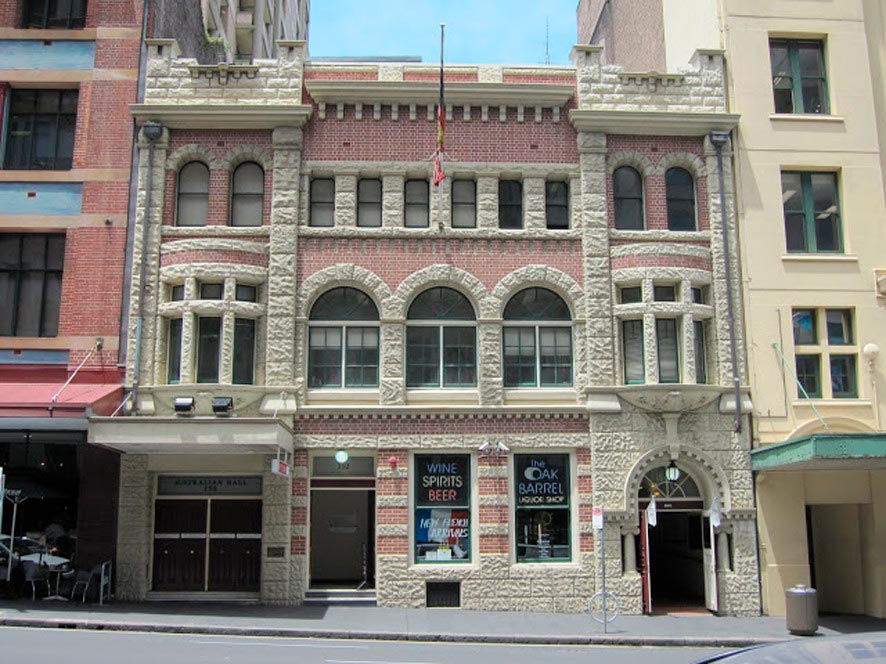This moment commemorates the Aboriginal Day of Mourning – the Indigenous response to Australia’s sesquicentenary in 1938.
It was the first national gathering of Indigenous people protesting against the prejudice and discrimination that was a daily part of their lives, and marked the beginning of the modern Aboriginal political movement.
26 January 1938
One of the events organised for the sesquicentenary was a re-enactment of the landing of Captain Arthur Phillip. Aboriginal people living in Sydney refused to take part so organisers brought in men from Menindee, in western New South Wales, and kept them locked up at the Redfern Police Barracks stables until the re-enactment took place.
On the day itself, they were made to run up the beach away from the British – an inaccurate version of events. Film footage of the re-enactment clearly shows that the men were not willing participants.
Jack Patten, Day of Mourning organiser:
We, representing the Aborigines of Australia, assembled in conference at the Australian Hall, Sydney, on the 26th day of January, 1938, this being the 150th Anniversary of the Whiteman's seizure of our country, hereby make protest against the callous treatment of our people by the whitemen during the past 150 years, and we appeal to the Australian nation of today to make new laws for the education and care of Aborigines, we ask for a new policy which will raise our people to full citizen status and equality within the community.

Meanwhile, a conference was taking place in the city at the Australian Hall at 150–152 Elizabeth Street. It was only for Indigenous people, although two white policemen and two journalists were permitted inside the building.
Contrary to what was going on outside in Sydney and throughout the country, the assembly declared 26 January to be a Day of Mourning. They mourned the loss of their country, their freedom and self-determination, and the deaths of so many of their kin.
The protest was organised by Jack Patten, William Ferguson and William Cooper, who had been instrumental in establishing lobby groups in New South Wales and Victoria.
William Cooper was at the centre of the Australian Aborigines’ League, which was formed in Victoria in 1934 to plan action on behalf of Aboriginal people.
William Ferguson had helped establish the Aborigines’ Progressive Association in 1937, while Jack Patten had founded the Abo Call, a newspaper for Aboriginal people, that was written and published by Aboriginal people.

Significance
The Day of Mourning was the first time Aboriginal activist groups from different states had fully cooperated.
According to the Dictionary of Sydney, 'it was, therefore, the first national Aboriginal civil rights gathering and represents the most clearly identifiable beginning of the contemporary Aboriginal political movement'.
While it may have seemed to be a protest that came out of the blue for many non-indigenous Australians, the political activity that culminated in the Day of Mourning in Sydney had been building for some time.
Aboriginal people had been organising and lobbying for some years to improve their conditions and rights, but with little tangible result. With a growing sense of despair, the decision was taken to organise the Day of Mourning.
Making it coincide with the sesquicentenary proved an effective way to bring attention to the multiple injustices done to Indigenous people in the course of Australia’s history since European settlement.
Following the protest, Prime Minister Joseph Lyons and his wife Enid met with organisers. They spent two hours together, but nothing practical resulted.
Marking the Day of Mourning became an annual event for Indigenous people and their supporters. The Sunday before Australia Day was set aside, but over time, this was shifted to July and eventually evolved into NAIDOC week.
The Australian Hall has become very significant to Indigenous people, and is listed on the National Register of heritage places.
Explore Defining Moments
References
Barani: Sydney’s Aboriginal History
Bain Attwood and Andrew Markus, Thinking Black: William Cooper and the Australian Aborigines' League, Aboriginal Studies Press, Canberra, 2004.
Andrew Markus, Blood from a Stone: William Cooper and the Australian Aborigines League, Allen and Unwin, Sydney, 1988.

